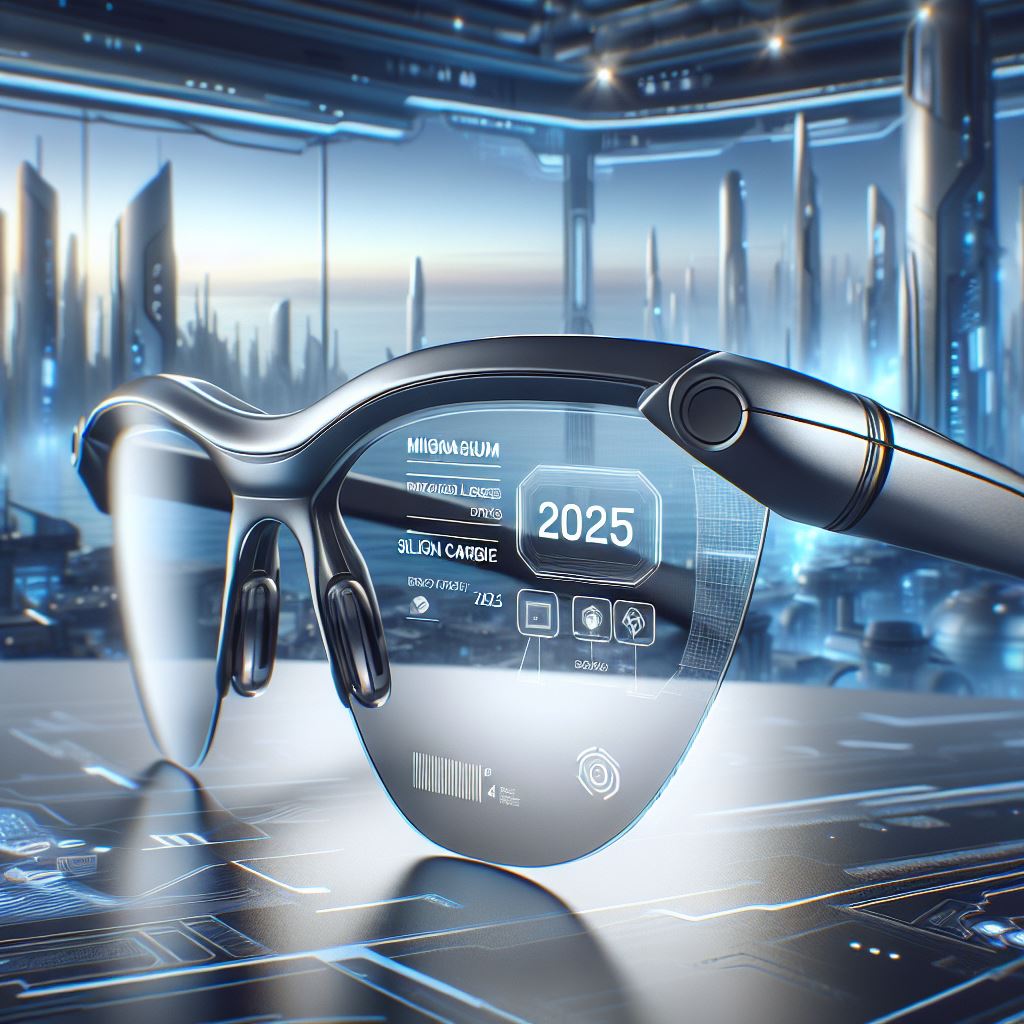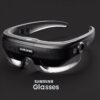Meta’s “Orion” AR Glasses: Are They Your Window to the Future?
Get ready for a potential shift in how you interact with the world. Meta’s highly anticipated Augmented Reality (AR) glasses, reportedly codenamed “Orion,” are stirring considerable buzz. Expected to launch as early as late 2024 for an internal “launch-for-feedback” with a wider, more polished consumer release anticipated in 2025, these aren’t just another piece of tech; they aim to seamlessly weave digital information and experiences into your everyday life. If you’re considering stepping into the next generation of wearable technology, here’s what you need to know about Meta’s ambitious vision.
What Could This Mean for You?
Imagine navigating city streets with directions subtly overlaid on your vision, instantly translating foreign languages, or having virtual assistants provide contextual information without you ever needing to glance at your phone. Meta’s AR glasses promise to integrate powerful AR and Artificial Intelligence (AI) capabilities, potentially making them an indispensable tool rather than just a novelty.
Expected Arrival & Investment:
While an official, precise release date for the full consumer version is still under wraps, industry whispers point towards 2025, with a more refined and feature-rich iteration potentially following by 2027. Be prepared for a premium investment; current estimates place the cost around $1,500 or potentially higher, reflecting the cutting-edge technology packed inside. This positions them as a high-end device for early adopters and those keen on experiencing the forefront of AR.
Design & Visuals: Style Meets Substance
- Look and Feel: Meta seems to be aiming for a design that’s both sleek and unobtrusive, drawing inspiration from classic Ray-Ban aesthetics to encourage all-day wear. Expect a focus on lightweight construction.
- Built to Last: A magnesium alloy chassis is rumored, offering a good balance of strength, lightness, and heat dissipation – crucial for comfort and performance.
- Crystal Clear Views: The lenses are a critical component. Meta is reportedly exploring advanced display technologies, possibly microOLED displays paired with innovative waveguide technology or LBS (Laser Beam Scanning) to project crisp, bright images directly onto your field of view. Silicon carbide has been mentioned for lens material, prized for its high clarity, scratch resistance, and reduced glare. The target is a field of view (FoV) wide enough for immersive experiences without feeling like you’re looking through a keyhole – potentially around 70 degrees.
- Color Palette: While specifics are unconfirmed, anticipate classic options like black, with potential for other stylish finishes to match diverse preferences.
Powering Your Augmented World: Key Technical Aspects
- The “Brain” Behind the Scenes: Early reports suggested an external, wirelessly connected “puck” or compute unit, potentially phone-sized, to handle the intensive processing demands of AR and AI. This offloads weight and heat from the glasses themselves, aiming for greater comfort. However, Meta’s long-term goal is likely to integrate all processing into the glasses as technology miniaturizes.
- Next-Gen Processing: Expect a custom-designed System-on-Chip (SoC) optimized for AR tasks, balancing performance with power efficiency. This will be crucial for running Meta’s AI models directly on the device.
- Sensors Galore: To understand and interact with your environment, the glasses will likely feature a suite of sensors, including multiple cameras (for passthrough video, environmental mapping, and potentially eye-tracking), IMUs (Inertial Measurement Units for motion tracking), and possibly depth sensors.
- Intuitive Interaction: Control is key. Besides potential smartphone integration, Meta is heavily investing in neural interface technology. This could involve a wristband or other input device that detects subtle neural signals for intuitive gesture control, effectively allowing you to interact with the AR world with minimal physical movement. Voice commands via integrated microphones are also a certainty.
- Staying Connected: Seamless connectivity is paramount. Wi-Fi 6/6E and Bluetooth 5.2 or higher will likely be standard for fast data transfer and communication with other devices. There’s also ongoing research into using the glasses themselves as a communication hub, potentially even with a dedicated cellular connection in future iterations.
- Battery Life – The Real-World Challenge: This remains a significant hurdle for all AR glasses. While specific numbers are speculative, expect an initial battery life that might necessitate mid-day charging for heavy users, perhaps in the 2-4 hour range of continuous use. The external puck, if part of the initial design, might house its own battery, potentially extending overall usage. Charging will likely be via a USB-C port.
Ecosystem & Compatibility: Seamless Integration?
- Meta-Centric Experience: Expect deep integration with Meta’s ecosystem – think seamless interaction with Meta AI, effortless sharing to Facebook and Instagram, and compatibility with other Meta hardware and software platforms.
- Smartphone Synergy: While designed to be powerful on their own, pairing with your smartphone (iOS and Android) will likely unlock enhanced features, notifications, and easier content management.
Why Consider Meta’s AR Glasses? The Potential Upsides for You.
- A Glimpse into the Future, Today: Be among the first to experience truly integrated AR, where digital information enhances your daily tasks, learning, and entertainment.
- AI at Your Command: With Meta AI on board, anticipate intelligent assistance, real-time information, and personalized experiences tailored to your context.
- Designed for Everyday (Eventually): The focus on a stylish, lightweight design means these could be glasses you’re comfortable wearing regularly.
- Cutting-Edge Visuals: If the rumored display technology delivers, expect sharp, vibrant AR overlays that blend naturally with your surroundings.
- Intuitive Control Beyond Touchscreens: The prospect of neural interface gesture control offers a revolutionary way to interact with technology.
- A Platform for Innovation: As an early adopter, you’ll be at the forefront of a new computing platform, with developers likely creating exciting new applications.
Human 2.0: These Wearables Will CHANGE Your DNA (and Your Life) in 2025
Potential Considerations & Trade-offs for Buyers:
- The Price of Innovation: At an estimated $1,500+, this is a significant financial commitment, akin to a high-end smartphone or laptop.
- Battery Life Realities: Be prepared for the current limitations of wearable battery technology. Frequent charging might be a part of the early experience.
- Ecosystem Lock-in?: While likely to offer broad smartphone compatibility, the richest experience will undoubtedly be within Meta’s own ecosystem.
- The “Early Adopter” Journey: First-generation technology often comes with a steeper learning curve, occasional bugs, and a developing app ecosystem.
- Privacy in an Augmented World: With advanced sensors and AI, questions around data privacy and security will be paramount. Meta will need to be transparent and robust in its approach.
- Initial Availability: High-demand, cutting-edge tech can sometimes be difficult to obtain at launch.
How Do They Stack Up? A Look at the Landscape (as of Early 2025)
- Ray-Ban Meta Smart Glasses: A great starting point if you want stylish smart glasses with camera and audio features. They are more affordable and discreet but offer very limited AR capabilities compared to what “Orion” promises. Think of these as smart audio/camera glasses, not true AR.
- Apple Vision Pro (Released 2024): While primarily a “spatial computing” headset with a strong VR focus, its high-quality passthrough AR capabilities set a benchmark for visual fidelity and interaction. It’s significantly bulkier and more expensive than what “Orion” aims to be, targeting a different use case (more immersive, less all-day wear). Orion aims for a different form factor and always-on AR.
- Other AR Contenders (e.g., XREAL Air 2 Ultra, potential Samsung/Google offerings): The AR market is dynamic. Competitors like XREAL offer impressive display quality for media consumption and productivity, often tethered to other devices. Upcoming glasses from Samsung (potentially in partnership with Google) are also anticipated and will likely offer strong competition, especially within the Android ecosystem. Meta’s differentiation will likely be its AI integration, neural interface, and deep social ecosystem.
Unique Features & Potential Game-Changers (Speculative & Aspirational)
While many features are still under wraps, here’s what could set Meta’s AR glasses apart:
- True “Always-On” AI Assistant: Beyond simple voice commands, an AI that proactively offers information and assistance based on your context and environment.
- Effortless Real-Time Translation: Break down language barriers instantly in conversations or by looking at text.
- Advanced Augmented Navigation: Intuitive, visual directions overlaid directly onto your path.
- Contextual Learning & Information: Imagine looking at a landmark and instantly receiving historical information or pointing at a product and seeing reviews.
- Next-Generation Social Interaction: New ways to share experiences and connect with others in mixed reality.
- Personalized Fitness & Wellness Cues: Subtle, integrated tracking and guidance.
The Bottom Line for Prospective Buyers (Early 2025)
Meta’s “Orion” AR glasses represent a bold leap towards a future where digital and physical realities merge. If they deliver on their promise of advanced AR, intuitive AI, and a wearable design, they could be a landmark product.
These glasses might be for you if:
- You’re an early adopter passionate about cutting-edge technology.
- You’re deeply integrated into Meta’s ecosystem or excited by its AI advancements.
- You envision practical, everyday uses for augmented reality beyond gaming or niche applications.
- The premium price point is within your budget for a first-generation transformative device.
You might want to wait if:
- You’re budget-conscious and prefer to see how the technology matures and prices evolve.
- Extended battery life is a non-negotiable requirement for your daily use.
- You’re wary of first-generation technology limitations or prefer a more developed app ecosystem.
- Privacy concerns with Meta’s platforms are a significant deterrent for you.
Meta’s AR glasses are not just a device; they’re a bet on the future of interaction. Keep a close eye on official announcements as 2025 progresses, as these could genuinely change the way you see and interact with your world.
The Biohacking Blueprint: Optimizing Your Body for Peak Performance in 2025


